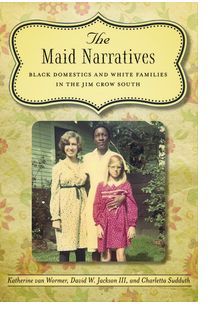The Help—the real deal
 Art imitating life ... imitating art. A new nonfiction book by three academics gives credence to The Help, Kathryn Stockett's novel of black domestics in white families during the South's Jim Crow era.
Art imitating life ... imitating art. A new nonfiction book by three academics gives credence to The Help, Kathryn Stockett's novel of black domestics in white families during the South's Jim Crow era.
The real maids interviewed for The Maid Narratives encountered much the same treatment we all read about in the fictional version—separate entrances, toilet facilities, and dining areas.
Yet co-author Katherine van Wormer found much that surprised her: stories that were more positive than expected, a sense of forgiveness, and lack of bitterness.
A few deep bonds were forged between black maids and their white employers. "Love can cross over color-lines," says co-author Charletta Sudduth, whose own mother was a domestic and interviewed for the book:
I think that a lot of women—black and white women—shared a relationship that was genuine and true. They found ways to help each other, found ways to cry with each other, found ways to laugh.Nonetheless, it was still a one-way racial street. As co-author van Wormer points out:
The whites thought of the maids as members of the family. The blacks didn’t see it that way. They had their own families, and the white people didn’t pay any attention to that.The Maid Narratives was in research stage when The Help came out. Rather than feeling dismay at having been beaten to the punch, the book's authors saw only benefits. The huge publicity surrounding Stockett's best seller convinced many former maids to come forward and tell their own stories.
"For many of the women," says third co-author David Jackson, "this was the first time they could talk about it and begin to heal. It was therapeutic."
Site by BOOM
![]()
LitLovers © 2024
